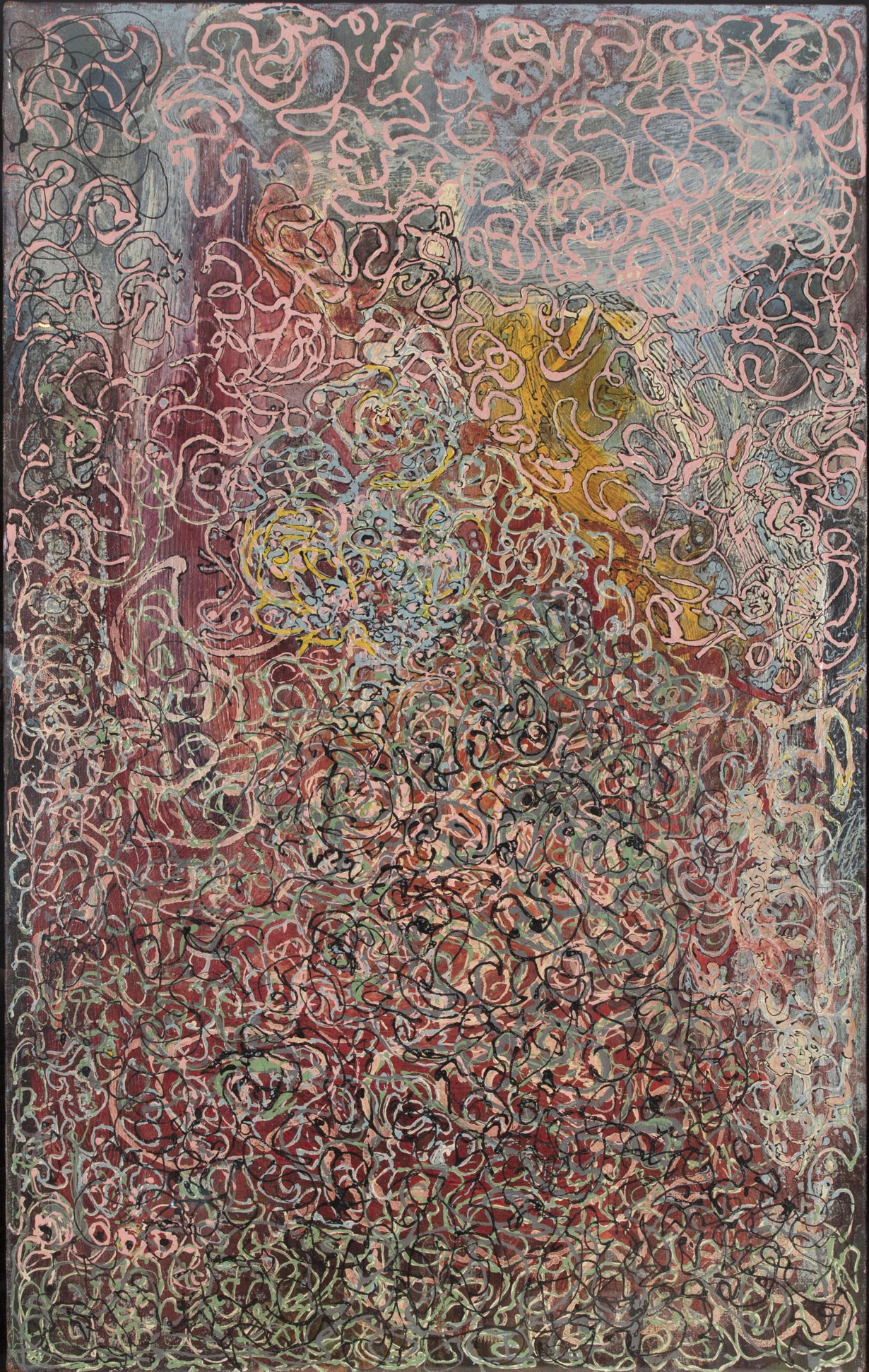Is it a good enough reason to have a women-only exhibition just because there have been too many exhibitions with only men?
All-women exhibitions are ‘tactically necessary’, according to the elder stateswoman of feminist art history, Griselda Pollock. In her opening essay of the catalogue that accompanies the Whitechapel Gallery’s Action, Gesture, Paint: Women in Global Abstraction, 1940-1970, Pollock argues that selective and revisionist exhibitions like this one play an important role in the crusade to correct the sexist art historical narrative. This is the only explanation offered for this single-gender show, and I admire its honesty. But is it a good enough reason to have a women-only exhibition just because there have been too many exhibitions with only men?

I’m not sure. Pollock herself has long argued that it is not a solution to male-dominated art history to try to fit women into a canon that has, for the most part, been constructed by and around men. Women were erased from art history in real time, and this exhibition demonstrates that. One famous example is the critic Clement Greenberg’s dismissal of the work of Janet Sobel, who pioneered the drip-painting method later made famous by Jackson Pollock. Greenberg called Sobel’s paintings ‘primitive’ and the work of a housewife, but went on to champion Jackson Pollock’s use of the same method. Sobel’s intricate drip paintings are featured in the exhibition, along with this story. It’s a perfect anecdote to demonstrate the blatant sexism that did not always prevent women from becoming artists, but even more dangerously prevented them from being remembered. Pollock’s scholarship is fierce in its pursuit of truth: it’s not just that we should find and celebrate art by women for its own sake, she argues, but rather that the women and their art were there all along, and the stories we tell without them are false.

That’s what makes me uncomfortable with shows like this one. Couldn’t you make the same argument here, that the ‘tactically necessary’ show is actually an overcorrection? Of course, the power dynamics and political implications of an all-women show are fundamentally different to an all-male show. But the narrative being presented is just as incomplete. The spectre of men haunts the galleries at the Whitechapel – the names of seminal male artists like Jackson Pollock, Willem de Kooning, and Robert Motherwell, and critics like Greenberg, fill the wall texts, as they filled these artists’ lives as lovers, friends and peers. Are we still incapable, in 2023, of putting on an exhibition of modern art in which men and women artists (or indeed artists of all genders) share the walls and the whole art historical narrative?

The problem with a ‘tactically necessary’ all-women exhibition is that the female experience can become essentialised – whether intentionally or not, the visitor is asked to infer that the works’ traits, subject matter and materials are stereotypically associated with femininity. Action, Gesture, Paint pulls together abstract works from almost every continent. It’s dominated by American artists (despite repeated claims in the wall texts and catalogue that the vanguard of mid-century abstraction was not limited to New York and Abstract Expressionism), but there are also works by artists including Maliheh Afnan, whose enigmatic ‘word paintings’ are inspired by Arabic script; or Janice Biala, whose sort-of-abstract-but-not-really Still Life with Ellie (Poindexter) (1957) reminds me of Pierre Bonnard’s sunny tablescapes; or Zilia Sánchez, whose gritty, textured surfaces make paint look like rust; and Else Fischer-Hansen, whose delicate little seascapes exude winter sunshine. Presented together here, the distinctions between the various schools of abstraction, evolving in parallel around the world during this period, are clear. It’s tempting to look for a connecting thread of femininity in these works, or a visual language shared by women, but what Action, Gesture, Paint really shows is the thrilling lack of one. Yes, the experience of living as a mid-century woman was different from the experience of living as a man, but that does not result in a single distinct and visible female language of abstraction.
The very first wall text in the first gallery describes the exhibition as a ‘celebration’ of women artists. And it does feel like one: the sheer breadth of work shown is exciting and ambitious. But perhaps it is the limitations of a ‘celebration’ that leave me unsatisfied – there is something distinctly unserious and superficial about a celebratory exhibition with no space for criticism. The gallery’s shop is currently filled with publications about women in abstraction, and women artists generally – many published decades ago (including shiny new editions of Griselda Pollock’s most important works). I simply do not buy the claim that we need more lists of women artists in order to be able to one day take them seriously, or indeed, remember them. Surely, by now, it’s ‘tactically necessary’ to shake out where these artists fall in the whole context of their histories – and art history at large? What do they look like next to work by male artists? How does their work broaden, disrupt, fit into, or question existing narratives of art history? Women-only shows have been put on since the nineteenth century, but the format doesn’t seem to be helping to dismantle patriarchal (and by extension binary) modes of looking at and criticising art. What more could we uncover by finding a new tool of feminist intervention?
